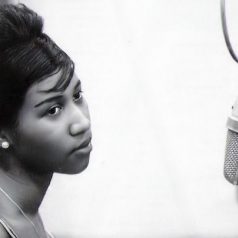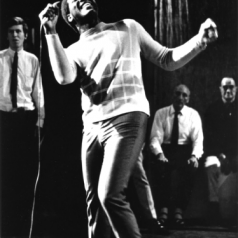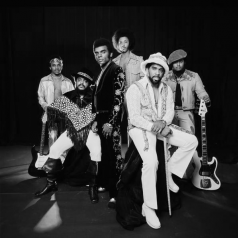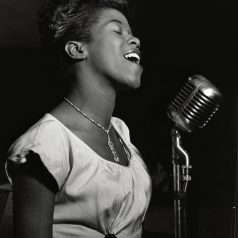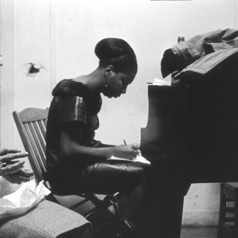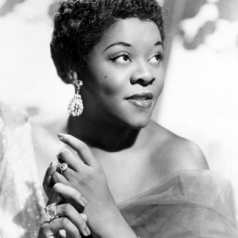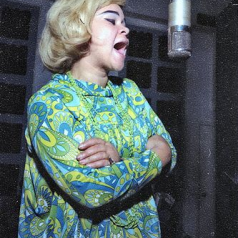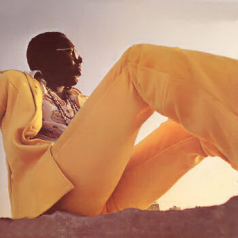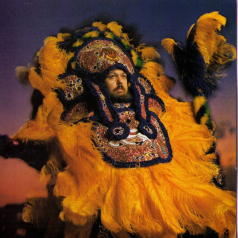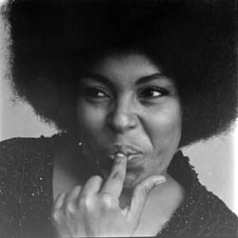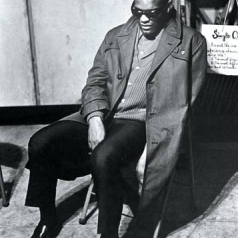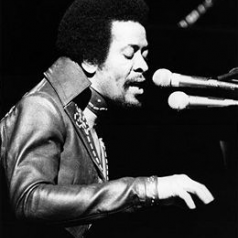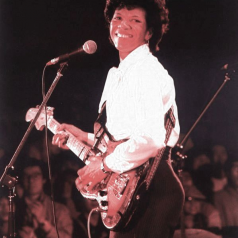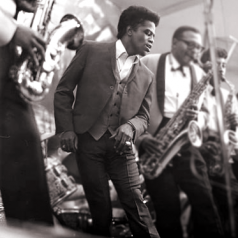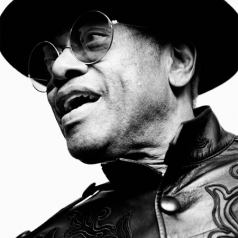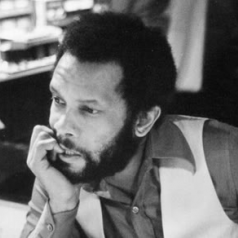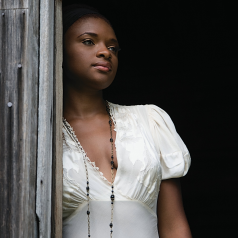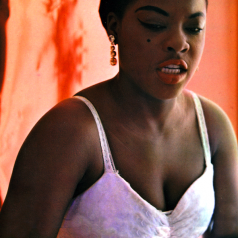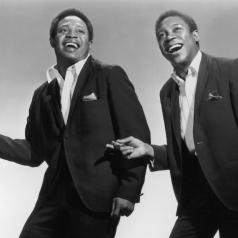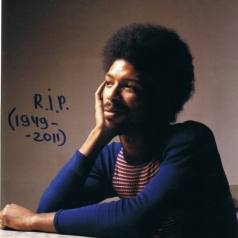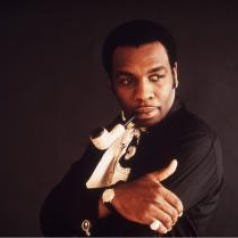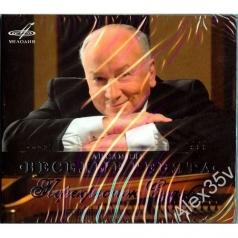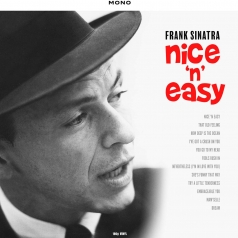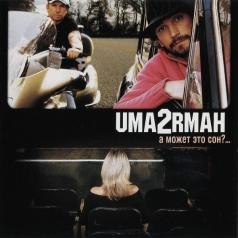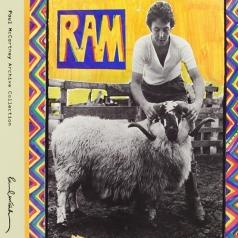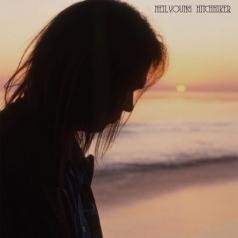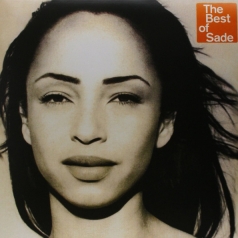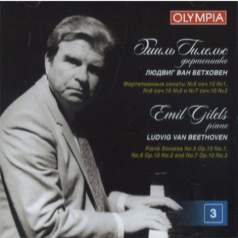- Главная
- /
- Esther Phillips
Esther Phillips
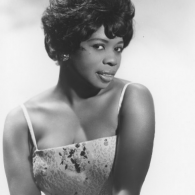
Купить Esther Phillips (Эстер Филипс) на CD компакт-дисках, бокс-сеты
Biography Эстер Филипс — та самая королева соула, которая уступила свой трон Арите. Записала несолько отличных пластинок под руководством знаменитого Крида Тейлора (звукорежем был "тот самый" Руди Ван Гелдер) с аранжировками Пи-Ви Эллиса, музыканты — гордость студии Крида... Эстер Филлипс была абсолютно универсальная певица. Ей удивительно легко удавались как блюзовые, так и джазово-соуловые песенки. Тембрально близка к Дине Вашингтон, а внешне по фактуре напоминает Нину Симонэ... Ее успешное сотрудничество с легендарным продюсером Кридом Тейлором продолжалось довольно-таки долго, благодаря чему и имеем великолепное по саунду наследие. Big Break When Phillips was an adolescent, her parents divorced, and she was forced to divide her time between her father in Houston and her mother in the Watts area of Los Angeles. Because she was brought up singing in church, she was hesitant to enter a talent contest at a local blues club, but her sister insisted and Esther complied. A remarkably mature singer at age fourteen, she won the amateur talent contest in 1949 at the Barrelhouse Club owned by Johnny Otis. Otis was so impressed that he recorded her for Modern Records and added her to his traveling revue, the California Rhythm and Blues Caravan, billed as "Little Esther Phillips" (she reportedly took the surname from a gas station sign Early career Her first hit record was "Double Crossin' Blues," recorded in 1950 for Savoy Records. After several hit records with Savoy, including her duet with Mel Walker on "Mistrustin' Blues," which went to number one that year, as did "Cupid Boogie." Other Phillips records that made it onto the R&B charts in 1950 include "Misery" (number 9), "Deceivin' Blues" (number 4), "Wedding Boogie" (number 6), and "Faraway Blues" (number 6). Few female artists, R&B or otherwise, had ever enjoyed such incredible success in their debut year.[3] Phillips left Otis and the Savoy label at the end of 1950 and signed with Federal Records. But just as quickly as the hits had started, the hits stopped. Although she cut more than thirty sides for Federal, only one, "Ring-a-Ding-Doo", charted; the song made it to number 8 in 1952. Not working with Otis was part of her problem; the other part was drugs. By the middle of the decade Phillips was chronically addicted to drugs. In 1954, she returned to Houston to live with her father to recuperate. Short on money, Little Esther worked in small nightclubs around the South, punctuated by periodic hospital stays in Lexington, Kentucky, stemming from her addiction. In 1962, Kenny Rogers rediscovered her while singing at a Houston club and got her signed to his brother’s Lenox label. Comeback Phillips ultimately got well enough to launch a comeback in 1962. Now called Esther Phillips instead of Little Esther, she recorded a country tune, "Release Me," which went to number 1 R&B and number 8 on the pop listings. Her cover of the Beatles song "And I Love Him" (naturally, with the gender changed) nearly made the R&B Top Ten in 1965 and the Beatles flew her to the U.K. for her first overseas performances. She had other hits in the 1960s on the label, but no more chart toppers, and she also waged another battle with heroin. With her addiction worsening, Phillips checked into a rehab facility. While undergoing treatment she cut some sides for Roulette in 1969. On her release she moved back to Los Angeles and re-signed with the Atlantic label. A late-1969 live gig at Freddie Jett's Pied Piper club produced the album Burnin', which was acclaimed as one of the best, most cohesive works of Phillips' career. She performed with the Johnny Otis Show at the legendary Monterey Jazz Festival in 1970. The 1970s One of her greatest post-1950s vocal triumphs was in 1972 with the song penned by Gil Scott-Heron, "Home Is Where the Hatred Is" -- a haunting account of drug use. "From a Whisper to a Scream" garnered a Grammy nomination in 1972. When Phillips lost to the "Queen of Soul" Aretha Franklin, the soul diva presented the trophy to Phillips, saying she should have won it instead. In 1975, she scored her biggest hit single since "Release Me" with a disco-style update of Dinah Washington's "What a Diff'rence a Day Makes". It reached a high of a Top Twenty chart appearance in the U.S., and Top Ten in the UK Singles Chart. On November 8, 1975 she performed the song on an episode of "NBC's Saturday Night" hosted by Candice Bergen. The accompanying album of the same name became her biggest seller yet, with Michael Brecker on tenor sax, David Sanborn on alto sax, and Randy Brecker on trumpet to Steve Khan on guitar and Don Grolnick on keyboards. She continued to record and perform throughout the 1970s and early 1980s. In 1983 she charted for the final time with "Turn Me Out," which only made it to number 83. Throughout the 1970s she also became a close friend of Andy Warhol. Phillips' performing career also reached its zenith during this period. Death Ill health undermined this artist's undoubted potential. Phillips' long-term heroin dependency, combined with heavy drinking, led to her death from liver and kidney failure in Carson, California in 1984, at the age of 48. Her funeral services were conducted by the bandleader who had started her out back in 1949, the Rev. Johnny Otis. Read more on Last.fm. User-contributed text is available under the Creative Commons By-SA License; additional terms may apply.

